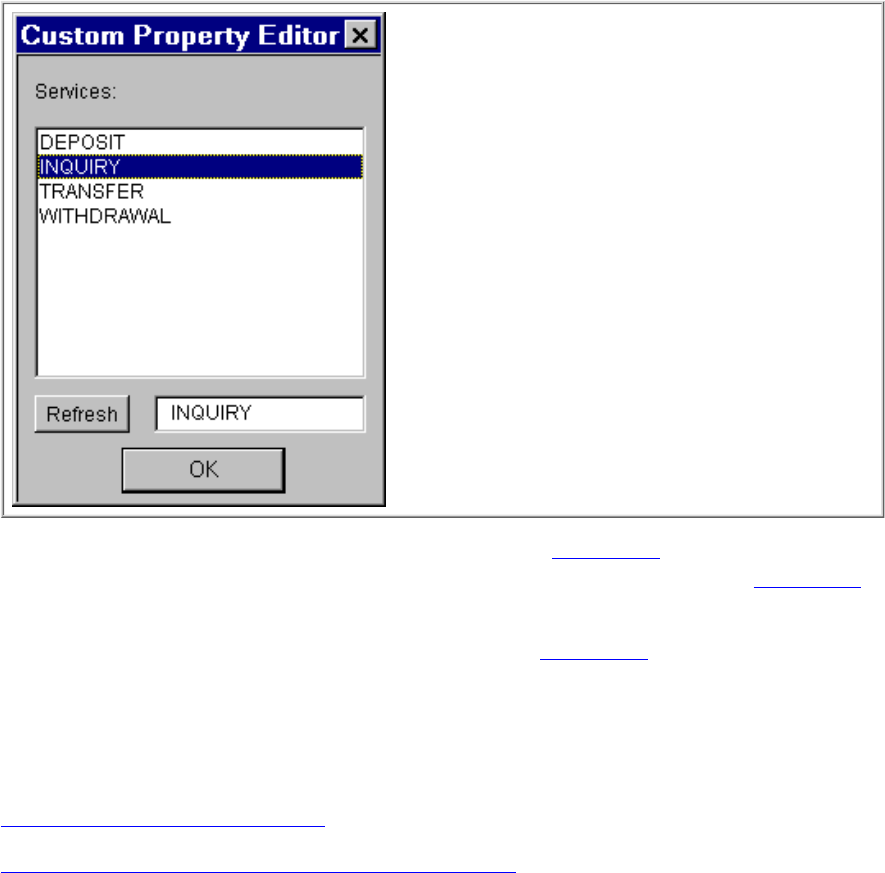Jolt 1.2 Developer's Guide
Table Of Contents
- Jolt for NonStop(TM) TUXEDO Developer's Guide
- Jolt for NonStop(TM) TUXEDO Developer's Guide
- About This Guide
- 1. Introducing Jolt
- 2. Installing Jolt
- 3. Configuring the Jolt System
- 4. Bulk Loading NonStopTM TUXEDO Services
- 5. Using the Jolt Repository Editor
- 6. Using the Jolt Class Library
- 7. Using JoltBeans
- 8. Using Servlet Connectivity for NonStopTM TUXEDO
- 9. Using Jolt 1.2 ASP Connectivity for NonStopTM TUXEDO
- A. NonStopTM TUXEDO Errors
- B. System Messages
- Index

Select the appropriate service name in the list box shown in Figure 7-29. Enter the property value (service or field
name) directly. A text box is provided. Select OK on the property editor dialog in Figure 7-29. The bean property
gets set with the contents of the textbox.
6.
Select OK on the Custom Property Editor dialog shown in Figure 7-297.
JoltBeans Programming Tasks
Additional procedure tasks include:
Using Transactions With JoltBeans●
Using Custom GUI Elements With the JoltService Bean●
Using Transactions With JoltBeans
Your NonStop
TM
TUXEDO application services may have functionality that will update your database. If so, you can
use transactions with JoltBeans (e.g., in BANKAPP, the services TRANSFER and WITHDRAWAL update the
database of BANKAPP). If your application service is read-only (for example, INQUIRY), you do not need to use
transactions.
The following example shows how to use transactions with JoltBeans.
setTransactional (true) is called on the JoltServiceBean. (isTransactional is a boolean property of the
JoltServiceBean.)
1.
beginTransaction() is called on the JoltSessionBean.2.
callService() is called on the JoltServiceBean.3.
Depending on the outcome of the service call, commitTransaction() or rollbackTransaction() is called on the
JoltSessionBean.
4.










